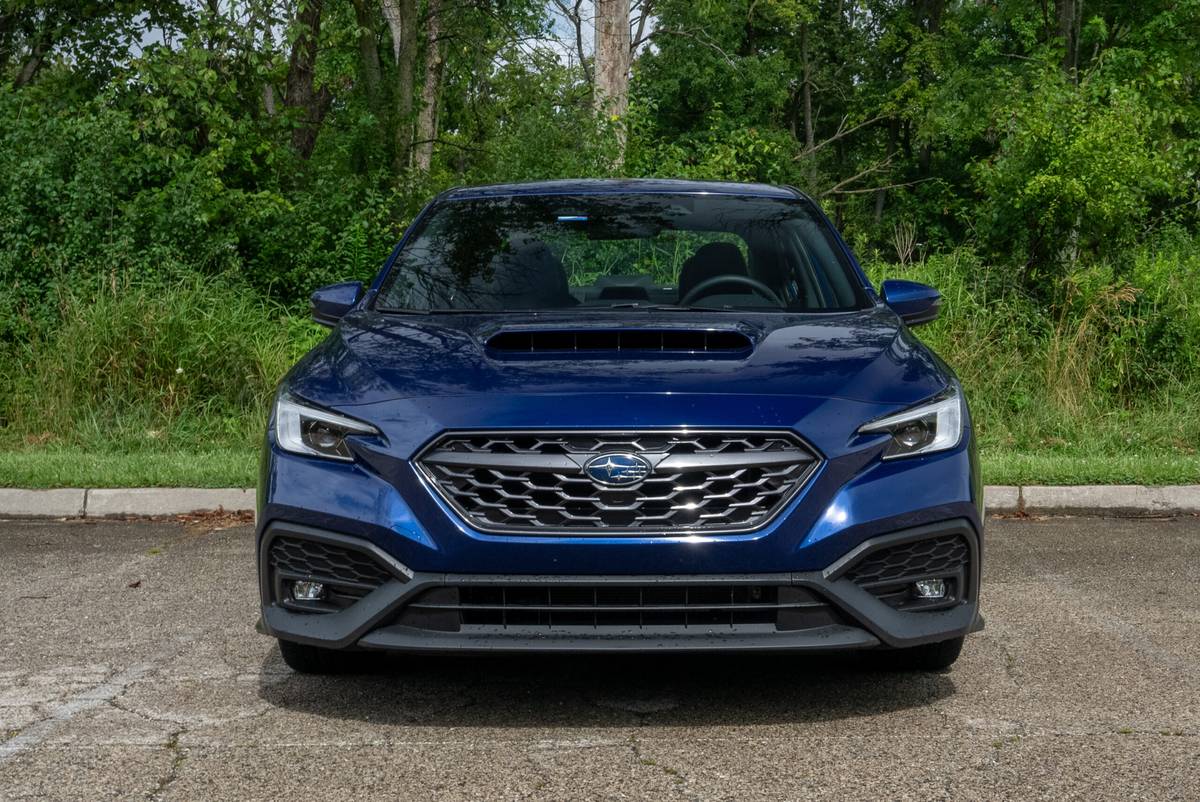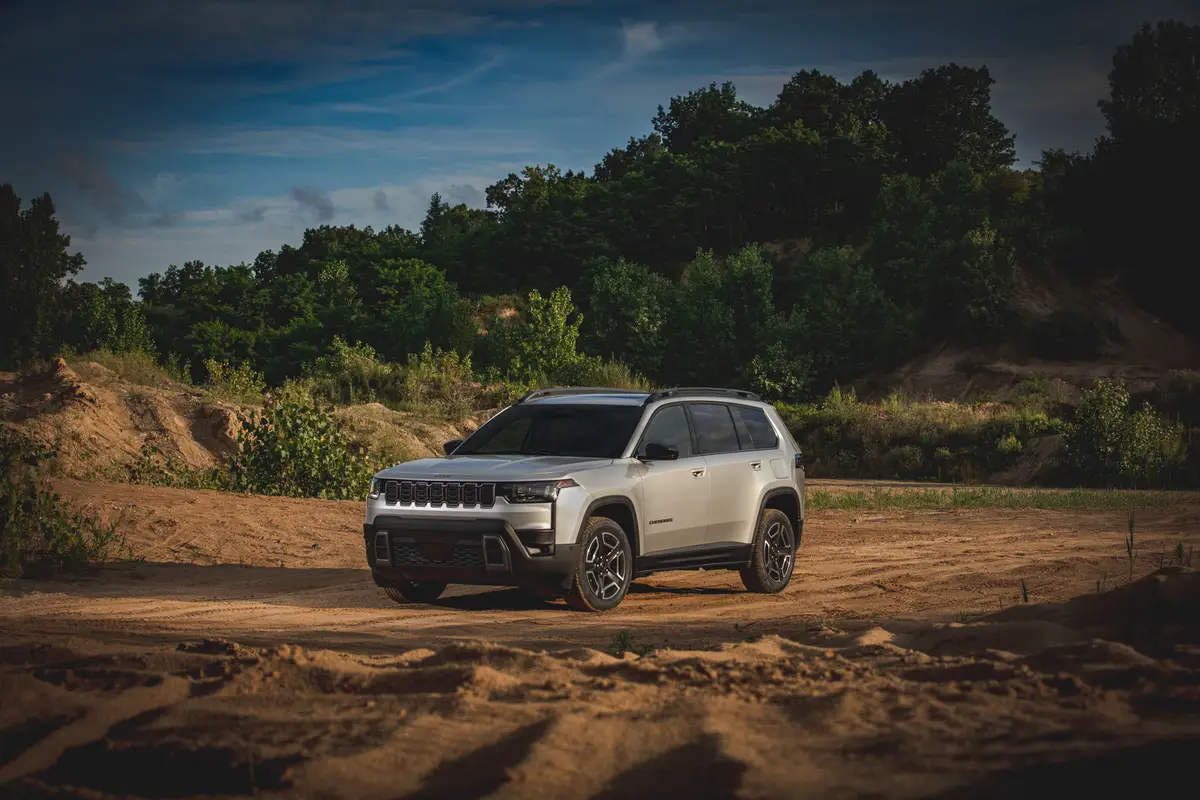Cincinnati.com's view
I only like to bet on a sure thing. Accordingly, I’ll wager that the Toyota Camry will be the best-selling car in America for model year 2002, despite being edged by Honda Accord this year.
Next year, I’ll pull my winnings off the table, because, with Accord getting a remake for the 2003 run, it may be too close to call.
I reviewed the all-new 2002 Camry a few weeks back, sampling what is likely to be the biggest seller, a base-level LE with four-cylinder engine and automatic transmission. I promised to return in short order with an assessment of the other end of the spectrum, a decked-out XLE series with automatic and six-cylinder engine, and here it is. For now, I’m skipping over the SE, which is said to be the sportiest member of the family.
The redesigned fifth-generation Camry is wider, taller and longer than its predecessor, with greater interior volume. I found even the relatively austere LE a very satisfying ride, with a standard equipment load that includes everything a family-car buyer might NEED. Toyota has eliminated the former value-leader CE, and brought the LE and XLE a bit closer in price.
The LE made no pretense at luxury, but neither did it feel compromised by a desire to meet a price point.
The question then is, what does the extra $5,605 get you in an XLE, comparing base prices of the two series? The body shell is virtually indistinguishable, with a clean, understated look with just a nod here and there to the winds of fashion, as in the D-shaped taillamps. A chrome side molding on XLEs is a restrained tip-off to Camry cognoscenti. (The SE has a rear spoiler.) The underpinnings are essentially the same, bearing a strong resemblance to the Highlander truck’s and the Lexus ES 300’s.
The XLE, even with a four-cylinder engine, sits on 16-inch wheels. If you go for the six-holer, they upgrade the wheels to aluminum alloy from steel. As noted in the earlier review, even the LE comes with air conditioning, power locks, power windows, power outside mirrors, cruise control, console, rear defogger, map lights, exterior-temperature gauge and vanity mirrors.
Move to XLE, and you get power driver and passenger seats, heated power outside mirrors, wood-like interior trim bits, climate control, trip computer with steering-wheel-mounted controls, chromed inside door handles, HomeLink garage door opener, auto-dimming rearview mirror, remote keyless entry, a rear sunshade and a cargo net.
Even with the simulated wood and a well-executed leather package, the tested XLE seemed not so much a different class of car as a gilding of a familiar friend.
How much difference does the six-cylinder engine make? Perhaps not as much as one might think. The four, after all, has been put on steroids, and now produces 157 horses (@5,600 rpm) and 162 foot-pounds (@4,000). One of the historic issues with a four-banger, and Toyota’s in particular, has been vibration at idle and harshness in the upper reaches of the rev rang e. Fergeddaboudid – Toyota’s wizards have given the 2.4-liter four finishing-school manners. It’s almost undetectable at idle, and sounds athletic when approaching the upper limit.
It delivered acceptable performance in the unit I tested, just barely sneaking in under 10 seconds in the 0-60 drill, but evincing good tractability under a variety of driving modes and handling freeway merges without undue driver angst. Of course the V-6 machine is peppier, even though in XLE trim the car weighs 220 pounds more. The 3.0’s output is 192 hp (@5,300) and 209 foot-pounds (@4,400). So equipped, the XLE automatic does the all-American sprint in about a second less than the 2.4-liter car does, which is indeed perceptible, but not overwhelming. You might be able to do quite nicely with the smaller engine, IF you do not fill the rear seats often. If I were going to test the claim of 2,000-pound towing capacity, I’d do it with the six.
The automatic transmission is geared rather high, so ffords less compression braking than I like, even in second gear. Conversely, with the overdrive setting delivering about 26 mph/1,000 rpm, the car loafs at freeway speeds and gets respectable gas mileage, too. EPA estimates are 20 mpg city, 28 highway. I logged 22.2 in mostly around-town motoring.
The transmission shifted smoothly and quickly, and was eager to pop a downshift when the situation warranted. The locking and unlocking of the torque converter in top gear was unusually prominent – curious.
Be advised that the six-cylinder engine, with a compression ratio of 10.5:1, prefers premium fuel. Safeguards are built in so it will run on lesser grades, but at reduced power levels, which would be somewhat self-defeating.
The chassis on the XLE felt every bit as rigid as the one on the LE series, with even more profound passenger-compartment isolation.
The main noise component in swift traverses of less-than-glassy roads was tire noise, the tester being fitted with all-season tires. Road-shock filtering, however, was the equal of many a luxury car’s, and overall noise level, even at 70, was moderate, bordering on hushed.
The power-assisted steering, working through fairly large contact patches provided by the 215/60 tires, was both quick and light, with minimal road feel. I would trade off some effort for more awareness, but that is not the Camry style. At the XLE level, brakes are discs fore and aft, with antilock standard. Stopping distances were even better than on the LE machine, was itself was impressive. On the whole, I felt more observer than participant as I exercised the machine. Its capabilities exceed what you expect at first blush, and it probably goes places most owners wouldn’t dream of. Better that than the reverse.
The XLE I tested came with the optional navigation system. Mounted centrally on the dash, it presents a color map at a number of user-selectable scales. DVD-based, it affords street-level coverage of the entire lower 48, and its processor has been souped up to provide nearly instantaneous route calculation. Working in conjunction with the on-board Global Positioning System receiver, it pinpoints your location and will send you to a new one with aural advice, if desired. It’s quite an impressive piece of gear, but can be a distraction, even though, each time it boots up, you must agree via the touch-screen OK box not to fiddle with it while moving. Yeah, sure. Unusually gadget-prone, I nonetheless have found it better to let life’s co-pilot busy herself with paper maps on long trips.
The navigation system brings with it an upgrade to the premium-level JBL AM-FM-cassette-CD-changer stereo. The unit had extraordinary tuner sensitivity as well as very good ambience and excellent overall tonality.
The Kentucky-built Camry was assembled with evident attention to detail. No assembly glitches to note, although the driver’s auto-down window controller was far too twitchy, probably a design is sue.
As noted above, base price on a V-6 XLE-level Camry is $25,405. The tested car had a $3,950 package consisting of the navigation system, leather trimmed seats, power driver’s and co-pilot’s seat, upgraded stereo and power moonroof; heated seats, $315, and front and rear side-curtain air bags, $500. Total, with freight, was $30,655, moving into low-end luxury-car territory. Payments on that car would be $621, assuming 20 percent down, 10 percent interest and 48 coupons.
I find the new Camry a much more plausible competitor at the lower end of the scale – at 30 grand, you might as well have a look at the Lexus variant. The price researchers at Edmunds say you should be able to get a grand or more knocked off the sticker price.
Latest news



